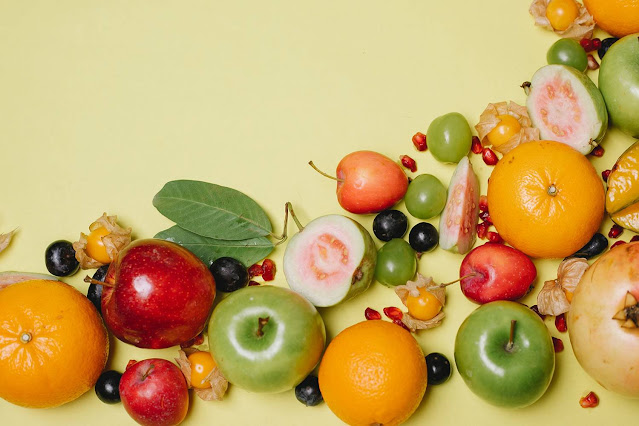Featured
- Get link
- X
- Other Apps
How to Understanding Nutritional Needs?
Before we delve into meal ideas, it's crucial to understand the nutritional needs of children. Young bodies require a balanced intake of macronutrients (carbohydrates, proteins, and fats) and micronutrients (vitamins and minerals) to thrive. Kids also need a proper intake of fiber, water, and essential nutrients like calcium, iron, and vitamin D.
Here are some key reasons why healthy snacking is important for children
Nutrient Intake: Snacking can contribute to a child's daily
intake of essential nutrients, including vitamins, minerals, and fiber. It's an
opportunity to provide nutrients that might be lacking in their main meals.
Energy Boost: Children are often active throughout the day,
and snacks can help replenish their energy levels, preventing them from feeling
sluggish or irritable.
Blood Sugar Control: Balanced snacks with a mixture of
carbohydrates, protein, & healthy fats can help stabilize blood sugar
levels, preventing energy crashes and mood swings.
Growth and Development: Adequate nutrition is crucial for a
child's growth, development, and overall health. Snacks can be an essential
part of meeting their nutritional needs.
Now that we understand the status of healthy snacking for
children, let's explore some nutritious snack options.
The Building Blocks of Healthy Meals
Fruits and Vegetables:
Fruits and vegetables are rich in vitamins, reserves, and
antioxidants. Encourage your kids to eat a change of colorful fruits and
vegetables to safeguard they get a wide range of nutrients. Offer fresh,
frozen, or canned options without added sugar or salt.
Lean Proteins:
Proteins are essential for growth and muscle development.
Contain lean sources of protein like chicken, turkey, fish, beans, and tofu in
your child's diet. Limit red meat and processed meats.
Whole Grains:
Choose whole grains over advanced grains for better fiber
and nutrient content. Options like whole-grain bread, pasta, brown rice, and
oatmeal are excellent choices.
Dairy or Dairy Alternatives:
Calcium is vital for growing bones. Opt for low-fat or
non-fat dairy products or heartened dairy alternatives like almond milk or soy
milk.
Guide to Making Nutritious Snack Choices
When choosing snacks, it's essential to focus on nutrient
density, portion control, and balance. Here's a guide to making nutritious
snack choices:
1. Prioritize Whole Foods: Choose snacks made from whole,
minimally processed ingredients. Whole foods like fruits, vegetables, nuts,
seeds, and whole scraps are rich in nutrients and fiber.
2. Include Protein: Protein-rich snacks, such as Greek
yogurt, lean meats, tofu, and nuts, provide sustained energy and promote
feelings of fullness.
3. Incorporate Fiber: Fiber-rich snacks, including whole
fruits, vegetables, whole grains, and legumes, aid digestion, support gut
health, and help control appetite.
4. Choose Healthy Fats: Opt for snacks containing well fats,
such as avocados, nuts, stones, and olives. Healthy fats support brain health
and provide long-lasting energy.
5. Mindful Portion Control: Be mindful of portion sizes to
avoid excessive calorie intake. Pre-portioning snacks can help control servings
and prevent overeating.
Practical Meal Planning Tips
Portion Control:
Serve appropriate portion sizes based on your child's age
and activity level. Avoid overloading their plates, as this can lead to
overeating.
Consistency:
Establish regular meal and snack times to help your child
develop a healthy eating routine
Get Kids Involved:
Engage children in meal preparation and planning. This
fosters a sense of ownership and makes them more likely to try new foods.
Limit Sugary Drinks:
Encourage water as the primary beverage. Limit sugary drinks
like soda, fruit juices, and sports drinks.
Sample Meal Ideas
Breakfast:
Whole-grain cereal with low-fat milk and fresh berries
Greek yogurt parfait with granola and sliced banana
Oatmeal topped with nuts, seeds, and diced apples
Lunch:
Turkey and avocado whole-grain wrap
Vegetable and hummus platter with whole-grain pita bread
Quinoa salad with chickpeas and diced vegetables
Dinner:
Baked salmon with steamed broccoli and quinoa
Grilled chicken with cooked sweet potatoes and green beans
Lentil and vegetable stir-fry with brown rice
Snacks:
Sliced vegetables with hummu
Apple slices with peanut butter
Cottage cheese with pineapple chunks
Dealing with Picky Eaters
Many children go through phases of picky eating. To address
this, offer a variety of foods and be patient. Avoid obliging your child to
eat, as it can create negative associations with mealtime. Keep introducing new
foods alongside familiar ones, and involve them in choosing healthy options.
- Get link
- X
- Other Apps
Popular Posts
Creative and Healthy Snack Ideas And, More About It
- Get link
- X
- Other Apps
How to keep one’s physical & cerebral well being in the pink
- Get link
- X
- Other Apps


Comments
Post a Comment